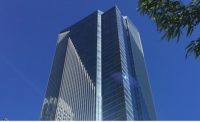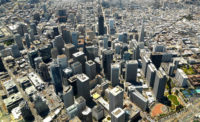The aftershocks of San Francisco’s 1906 earthquake continue to reverberate more than a century later, shaping the city’s policies—especially as more skyscrapers rise, bringing to the fore new habitability and recovery concerns for the next seismic event. And another “big one” is coming; seismologists predict a 76 percent chance of a 7.0-magnitude earthquake in the Bay Area within the next three decades. In preparation for this, the city’s Office of Resilience and Capital Planning (ORCP) published the comprehensive San Francisco Tall Buildings Study on January 10, which reveals some of the city’s weaknesses while formulating plans to address them before the next quake hits.
Among its many focus areas are building performance and geotechnical requirements. After an earthquake, many buildings could be deemed uninhabitable because of current regulations. “We design buildings today with a 10 percent chance of collapse in a maximum considered earthquake as the building code standard,” says Danielle Mieler, principal resilience analyst for the ORCP. (The maximum considered earthquake typically refers to one that has roughly a 2 percent chance of being exceeded in 50 years.) “We need to think about buildings that are reusable, not disposable, for a whole host of environmental reasons, as well as for the long-term viability of the city.” The report’s recommendations include new design and construction requirements, such as tighter drift limits.
In light of the much-publicized sinking of the Millennium Tower, which has led to greater scrutiny of the San Francisco codes for minimum geotechnical requirements for new buildings, the report recommends further study and codification of best geotechnical practices, based on deeper understanding of foundations and the city’s unique soil conditions.
The study also provides thorough documentation of the city’s tall-building stock. One type of construction it calls out is welded-steel moment frames. Many of these structures have not been reinspected since the 1994 Northridge earthquake in Southern California revealed vulnerabilities in some connections.
The San Francisco Tall Buildings Study provides a template that could be useful for cities worldwide— even those not located in regions of high seismic activity. As the climate continues to change, and natural disasters occur more frequently and with greater ferocity, this type of investigation could help other places prepare for the next big one, in whatever form it takes.





